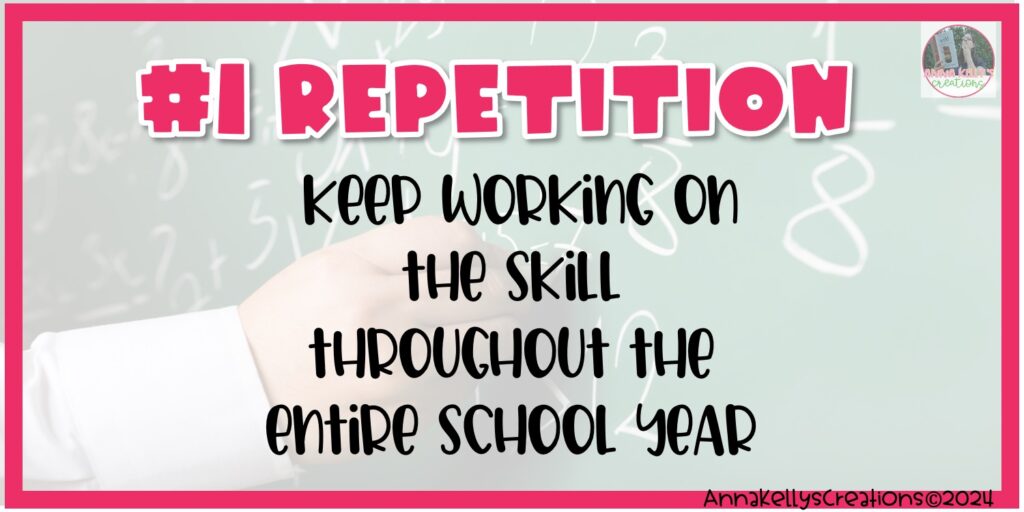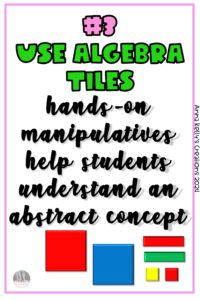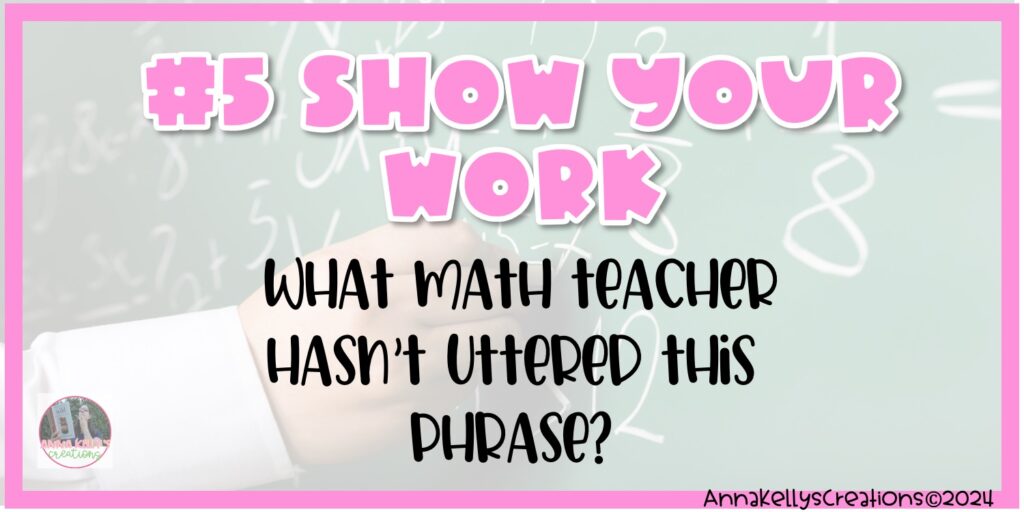Every year with my middle school students I would get pumped for when we started solving 2-step equations. Equations are one math topic I love to teach. However, it is a very abstract idea for most students receiving intervention. Because solving equations is such a crucial building block for future math and Algebra I feel it is a skill students need to master. I’m going to share with you some techniques I used for solving 2-step equations in my intervention classes.

1. Repetition
I know that grade level teachers have their list of standards that they need to cover before end of year testing time. I get it. But for most students, especially those who have an IEP or need intervention, repetition is important. Several of the math skills taught will need to be carried throughout the year, so refreshers are important. Helping students continue to practice solving 2 step equations is imperative in helping them develop and master the skills that they will need for Algebra. But even more than that, the more that we practice something, the better we remember it. Students with IEPs need extra practice, so let’s give it to them! Revisiting old standards is never an issue. Repetition and review help students with learning disabilities thrive. I have my students practice this skill all year long, even when they’ve moved on in Math class.
2. Start small
Your students may tell you they already know how to do something. “Oh, I already know how to do one step equations,” they may say. And they may be right, but starting small and having students learn the beginning of the math process will only help them later on. Starting over and rebuilding gives all students the same solid foundation to build on. So, before diving straight into solving 2 step equations, it might be the best idea to review 1 step equations first!
3. Use Algebra Tiles
I find that manipulatives help my students understand the logic and steps of equations. Algebra tiles are perfect for this because they allow students to see the numbers as ones, tens, and hundreds. They are also useful because they help students to see how much of something is being added or taken away. These can even be used to determine how to solve 2 step equations.
If you don’t have them in your classroom, ask your math facilitator or administrator if they have any that your students can use. Another Idea is to print and laminate some. A quick Google search will find you many templates to choose from.
Linda over at Blue Mountain Math has a great post about ways to get started using Algebra tiles. Click on the link to read more.
4. Start with the End
Teach students how to work backwards to check their work. Have students write down the steps of the equation and then write them in reverse.
For example:
2x+5=11
*2 /2
+5 -5
After this, write the steps in reverse order (the numbers shown in red). Have students solve the equation starting at the bottom and working up. This isn’t the only way to use this technique, but no matter how you use it, you should be able to see the real order of the problem by solving in reverse.

5. Showing Their Work
You’ll always have one, or well, at least one, student who doesn’t show their work. They claim that they can do it in their head or they just make an educated guess and choose an answer. That isn’t what I’m looking for in my classroom and it’s a math battle that I have no intentions of fighting. Students know that I expect to see their work shown. Without shown work, students can’t see the steps in the problem. I also can’t see what missteps they may have made.
6. Add in More Steps
Don’t keep adding steps all at once. This overwhelms students. Instead, wait until students are showing mastery of the current skill before adding more challenging steps on to the equations. For example, before moving on to solving 2 step equations, give students the opportunity to show mastery of solving 1 step equations first. Again, these skills build.
7. Have Fun!
As much as I love math, I believe that if we don’t take the time to make it interesting, it can get boring real fast. Especially with daily intervention blocks focusing on trying to master the same skill over and over, students can start to act out or become disengaged. Sometimes I think we forget that learning can be academic AND be fun at the same time. No matter how young or old your students are, they likely appreciate engaging activities. When I worked with my 8th graders, I quickly realized that they wanted to do fun activities such as coloring by code or playing games just as my younger students did!
I have many fun solving 2-step equations activities already made and scaffolded in my store. Click here to check them out.
There you have it! I hope that these ideas help you to keep this information in mind as you start to teach your students how to solve 2 step equations and review older activities. c




